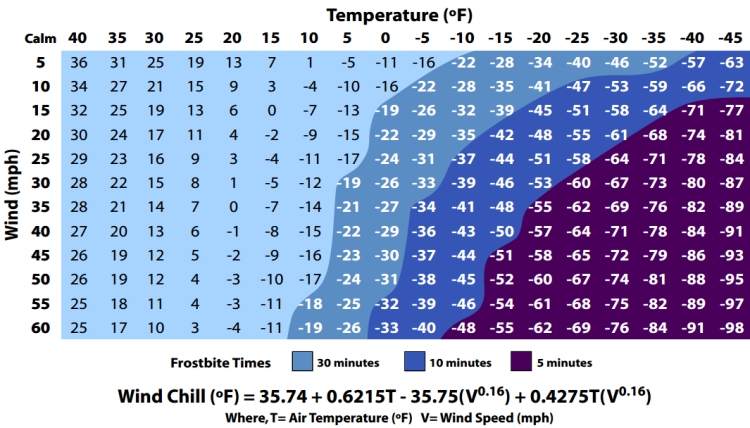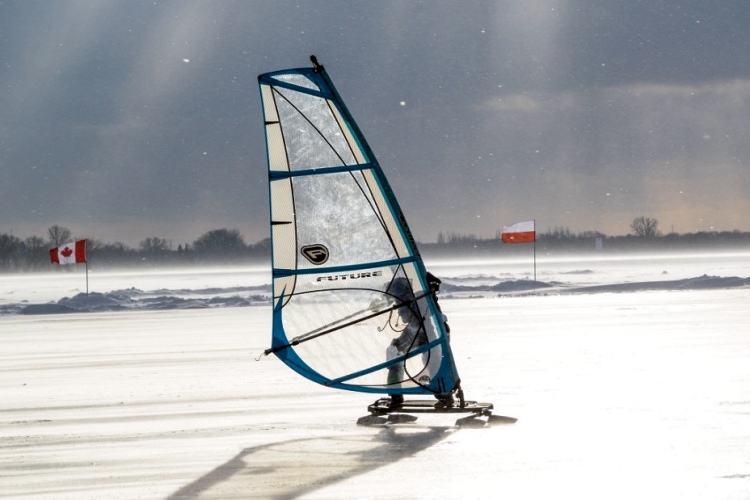The wind chill temperature combines the cooling effect of wind and temperature.
Windsurfers, kiteboarders, and wave riders, in general, have certainly felt how wind reduces comfort when they're out in the water on a cold and windy winter day.
So, how does cold air feel on human skin? One of the most stable variables in our body's equation is temperature.
The average human body temperature ranges between 98.2 °F and 98.6 °F (36.8 °C and 37 °C). Wind can easily change that.
According to NOAA's National Weather Service, when you're sailing, and the wind increases, "the body is cooled at a faster rate, driving down both the skin temperature and eventually the internal body temperature."
When body extremities such as fingers, toes, ear lobes, or the tip of the nose suffer frostbite, you'll start losing feeling, and body tissue will become white or pale.
Not to forget the surfer's ear and hypothermia, a deadly condition deeply related to the body's internal temperature.

40% of Body Heat is Lost Through the Head
Interestingly, the Wind Chill Chart, also known as the Wind Chill Temperature Index, uses calculated wind speed at an average height of five feet, which is the average height of a human face, the part of the human body most often exposed to the elements.
The result of the wind speed variable is then related to the latest heat transfer theory, i.e., heat loss from the body to its surroundings during cold and breezy/windy days and in a no-sunlight scenario.
The scientific formula for estimating the dangers arising from winter winds and freezing temperatures was developed by Randall Osczevski of DCIEM and Maurice Bluestein of Purdue University, Indiana, based on a 1945 research of Antarctic explorers Siple and Passel.
The Wind Chill Chart shows how frostbite will occur if a given temperature is lower/higher and the wind speed is lower/higher.
Did you know that 40 percent of your body heat can be lost through your head?
The graphic chart will rapidly tell you the points where temperature, wind speed, and exposure time will produce frostbite in humans, as well as the areas of serious frostbite danger.
Ready to sail out in low temperatures? Protect your head, hands, and feet from cold.
